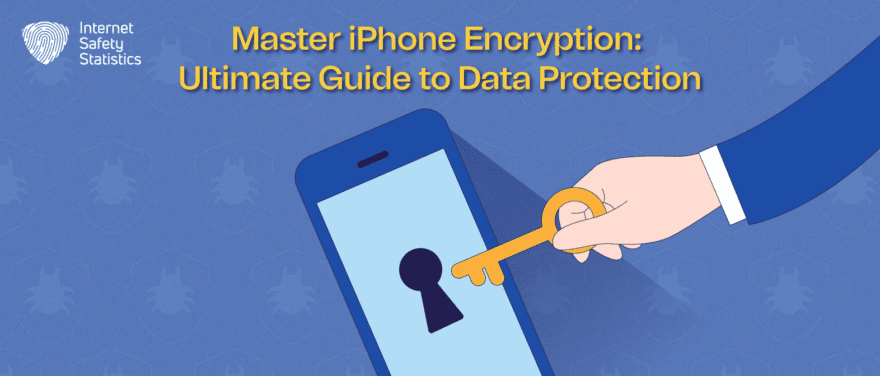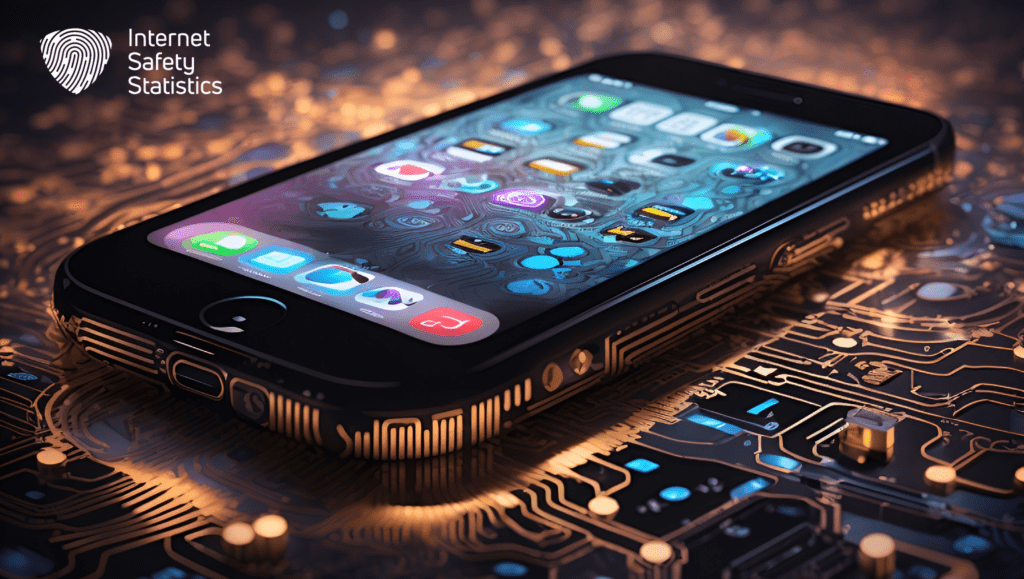
In the digital era, where our personal and professional lives are intertwined with smart devices, cybersecurity has become paramount. iPhone users, in particular, hold a wealth of sensitive data – from personal emails and messages to financial information – all at the risk of falling into the wrong hands. One effective method to safeguard this information is through iPhone encryption.
As digital security enthusiasts, we understand the intricacies of iOS encryption and are here to guide you through a step-by-step process to protect your device. This involves creating robust passwords, enabling two-factor authentication, and making the most of encryption tools like iCloud and third-party applications. By encrypting your iPhone, you’re not just securing your data; you’re investing in enhanced privacy and peace of mind in an increasingly interconnected world.
Understanding Encryption: The Key to iPhone Security
Encryption is a fundamental security measure that transforms your data into a coded form, making it inaccessible without the correct decryption key. This digital lock and key system provides robust protection for the information stored on your iPhone.
Common encryption types include Advanced Encryption Standard (AES) 256-bit encryption and RSA (Rivest-Shamir-Adleman). AES is a symmetrical encryption algorithm widely recognized as the most secure method for data encryption, while RSA is an asymmetric encryption algorithm primarily used for secure data transmission.
Now, why is encryption so essential?
Consider the sensitive information stored on your iPhone: banking details, login credentials, personal messages, and more. Without encryption, this data becomes vulnerable to unauthorized access and potential security breaches. Encryption acts as a digital fortress, safeguarding your private information from data theft and identity theft.
The absence of encryption on your iPhone could lead to severe security risks. These include data breaches, financial loss, and compromised personal information, turning your digital life into a nightmare. Therefore, understanding the benefits of encryption and taking steps to enable it on your iPhone is not just advisable but necessary for digital safety.
In essence, encryption provides a shield for your iPhone, ensuring that even if the device is lost or stolen, the data within remains secure and inaccessible to unauthorized individuals. By encrypting your iPhone, you’re taking a proactive step towards securing your digital footprint, reinforcing your defences against the ever-evolving landscape of cyber threats.
Remember, in today’s interconnected world, data security is no longer a luxury but a necessity. So, let’s start encrypting and protecting what matters.
Different Ways of Encrypting an iPhone
There are various types and ways of iPhone encryption, depending on your needs and preferences. Let’s dive right into some of them!
Built-In Encryption Settings
iPhones come with built-in encryption settings, which are automatically enabled when you set a passcode on your device. Here’s how to verify if built-in encryption is enabled:
- Open “Settings” on your iPhone.
- Select “Touch ID & Passcode” or “Face ID & Passcode,” depending on your device model.
- Enter your passcode when prompted.
- Scroll to the bottom. If you see “Data Protection is Enabled,” your device is already encrypted.
The strength of your encryption is correlated with the complexity of your passcode. Therefore, avoid common combinations and opt for a unique combination.
Third-Party Security Apps
Another way to bolster your iPhone’s security is by installing third-party security apps. These apps provide additional encryption features for specific types of data, such as photos, messages, or emails. Before choosing a third-party app, ensure it is reliable, has good user reviews, and adheres to the highest security standards.
Two-Factor Authentication (2FA)
Two-Factor Authentication (2FA) isn’t a form of encryption, but it enhances the security of your encrypted data. By requiring a second verification step, 2FA makes it significantly more challenging for unauthorized users to access your encrypted data.
To enable 2FA on your iPhone:
- Go to “Settings.”
- Tap on your name at the top, then tap “Password & Security.”
- Tap “Turn On Two-Factor Authentication.”

How to Encrypt Your iPhone Effectively
Now, let’s delve into the specifics of how you can encrypt your iPhone for optimal security.
1. Set a Strong Passcode: The first step in encrypting your iPhone is setting a strong passcode. This passcode acts as the decryption key to your encrypted data. Avoid common combinations like ‘1234’ or ‘0000’ and opt for a unique combination that includes letters, numbers, and symbols.
2. Enable Two-Factor Authentication (2FA): Two-Factor Authentication adds an additional layer of security. It requires a second verification step, making it significantly harder for unauthorized users to access your encrypted data. You can enable 2FA from the “Password & Security” settings on your iPhone.
3. Avoid Public Wi-Fi Networks: Public Wi-Fi networks often lack proper security measures, making them prime targets for cybercriminals. Even if your iPhone is encrypted, using public Wi-Fi can expose your device to potential threats. To stay safe, use secure, private networks whenever possible.
By following these simple steps, you can significantly enhance your device’s security and protect your digital data.
Common Mistakes to Avoid When Using iPhone Encryption
Even a robust security measure such as encryption can be compromised by common mistakes made during its implementation. This guide outlines these pitfalls and provides practical advice on avoiding them.
Weak Passcodes
One of the most common mistakes is using a weak passcode. The strength of your iPhone’s encryption largely depends on the complexity of your passcode. A weak or easily guessable passcode, such as ‘1234’ or ‘0000’, drastically reduces the effectiveness of the encryption.
Solution: Always opt for a strong, unique passcode that includes a mix of letters, numbers, and symbols. Avoid using personal information like birthdays or anniversaries, which can be easily guessed by cybercriminals.
Not Backing Up Before Enabling Encryption
Failing to back up your device before enabling encryption is another common mistake. If something goes wrong during the encryption process, you could potentially lose all the data stored on your device.
Solution: Always ensure you have a recent backup of your iPhone’s data before initiating the encryption process. You can do this via iCloud or by connecting your iPhone to a computer and using iTunes.
Not Disabling iCloud Keychain
iCloud Keychain is a handy feature that stores and syncs your passwords and credit card information across all your Apple devices. However, if iCloud Keychain is enabled, it can create a potential backdoor for cybercriminals to bypass your iPhone’s encryption and access your sensitive data.
Solution: Before enabling encryption, make sure to disable iCloud Keychain. Navigate to Settings > [your name] > iCloud > Keychain and toggle off iCloud Keychain.
Ignoring Two-Factor Authentication (2FA)
While not directly related to encryption, ignoring Two-Factor Authentication (2FA) can undermine the security of your encrypted data. 2FA adds an extra layer of protection by requiring a second form of verification, significantly reducing the risk of unauthorized access.
Solution: Always enable 2FA on your iPhone. You can do this by going to Settings > [your name] > Password & Security > Two-Factor Authentication.
Remember, in the digital world, your security is only as strong as your weakest link. So, stay safe, stay encrypted.
What To Do if You Lose Access to Your Data Due to encryption Issues
Like any technology, encryption can sometimes present issues that may lead to temporary loss of access to your data. Understanding the causes, symptoms, and solutions to these problems can help you navigate any encryption-related challenges.
Identifying Encryption Issues
Typically, encryption issues occur due to incorrect passcodes, software glitches, or hardware malfunctions. Symptoms can range from being unable to unlock your iPhone to experiencing slow performance or even complete data inaccessibility.
Steps to Recover Lost Data Due to Encryption Issues
If you encounter encryption issues, take the following steps:
1. Try Restarting Your iPhone: Sometimes, a simple restart can resolve minor software glitches that might be causing the issue.
2. Attempt Recovery Mode: If a restart doesn’t work, try putting your iPhone into Recovery Mode. This process allows iTunes to restore your device’s operating system without deleting your data.
3. Contact Apple Support: If the above steps don’t resolve the issue, it’s advisable to reach out to Apple Support. They have the necessary tools and expertise to diagnose and fix complex encryption problems.
To prevent future encryption problems, ensure your iPhone’s software is always updated to the latest version, as updates often contain fixes for known bugs and issues. Additionally, avoid using jailbreak applications, which can interfere with your iPhone’s security features, including encryption.
In conclusion, mastering iPhone encryption is not just a matter of enhancing the security of your device, but it’s also about ensuring the safety of your personal and professional data in the digital landscape. By adhering to robust passcodes, enabling Two-Factor Authentication, avoiding public Wi-Fi networks, and regularly backing up your iPhone, you’re not only fortifying your defences against potential cyber threats but also preparing for any unforeseen encryption issues.
Remember, the digital world is fraught with risks, and your iPhone’s encryption is your first line of defence. So stay safe, stay encrypted, and navigate the digital world with confidence and peace of mind.
